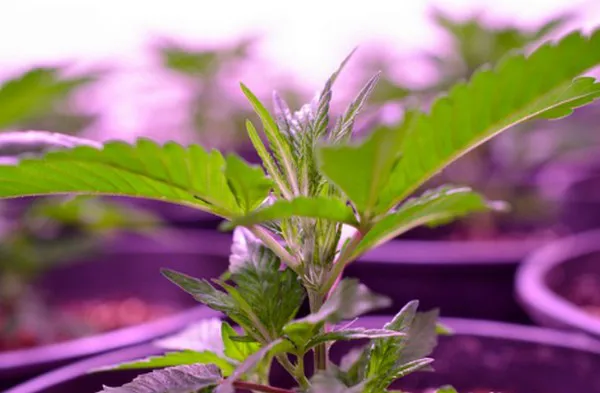“The current lack of scientific information related to light intensity (LI) during the vegetative stage has resulted in a broad range of canopy-level PPFDs being recommended to cultivators. Since cannabis can tolerate and even flourish under very high LI, there is an opportunity to elevate PPFD during the vegetative stage to enhance plant structure and shorten the length of the vegetative stage.” That is why a recent study aimed to determine the effects of a broad range of LI on vegetative stage cannabis morphology and growth attributes when grown in a 100% LED lighting environment to guide cultivators towards optimizing the LI for their specific production strategies.
Light’s influence
Since light has a major role in mediating plant morphology and ontogeny, the light intensity, photoperiod, and spectrum can each be manipulated by cannabis cultivators to produce plants with the desired morphological characteristics during the various growth stages of indoor cannabis production with the ultimate goals of maximizing yield and quality of the marketable products. “Although the vegetative stage of indoor cannabis production can be relatively short in duration, there is a high energy demand due to higher light intensities than the clonal propagation stage and longer photoperiods than the flowering stage. While electric lighting is a major component of both energy consumption and overall production costs, there is a lack of scientific information to guide cultivators in selecting a LI that corresponds to their vegetative stage production strategies.”
The experiment
The experiment consisted of three enclosures inside a commercial cannabis production facility in Southern Ontario, Canada. To determine the vegetative plant responses to LI, clonal plants of ‘Gelato’ (indica-dominant hybrid genotype) were grown for 21 days with canopy-level photosynthetic photon flux densities (PPFD) ranging between 135 and 1430 µmol·m−2·s−1 with a 16-h photoperiod (i.e., daily light integrals of 7.8–82.4 mol·m−2·d−1). Plant height and growth index (i.e., a canopy volume metric) responded quadratically; the number of nodes, stem thickness, and aboveground dry weight increased asymptotically; and internode length and water content of aboveground tissues decreased linearly with increasing LI. Foliar attributes had varying responses to LI. Chlorophyll content index (i.e., SPAD value) increased asymptotically, leaf size decreased linearly, and specific leaf weight increased linearly with increasing LI.
Generally, PPFD levels of ≈ 900 µmol·m−2·s−1 produced compact, robust plants, while PPFD levels of ≈ 600 µmol·m−2·s−1 promoted more open plant architecture (i.e., taller plants with longer internodes), which can increase intra-canopy airflow and may reduce the development of potential foliar pests in compact (e.g., indica-dominant) genotypes. Therefore, the researchers observed that PPFD levels between 600 and 900 µmol·m−2·s−1 appeared to achieve an appropriate balance in optimizing key morphological parameters in vegetative cannabis while minimizing energy use associated with excessively-high LIs. and also considering different production strategies.
To read the complete study, go to www.sciencedirect.com
